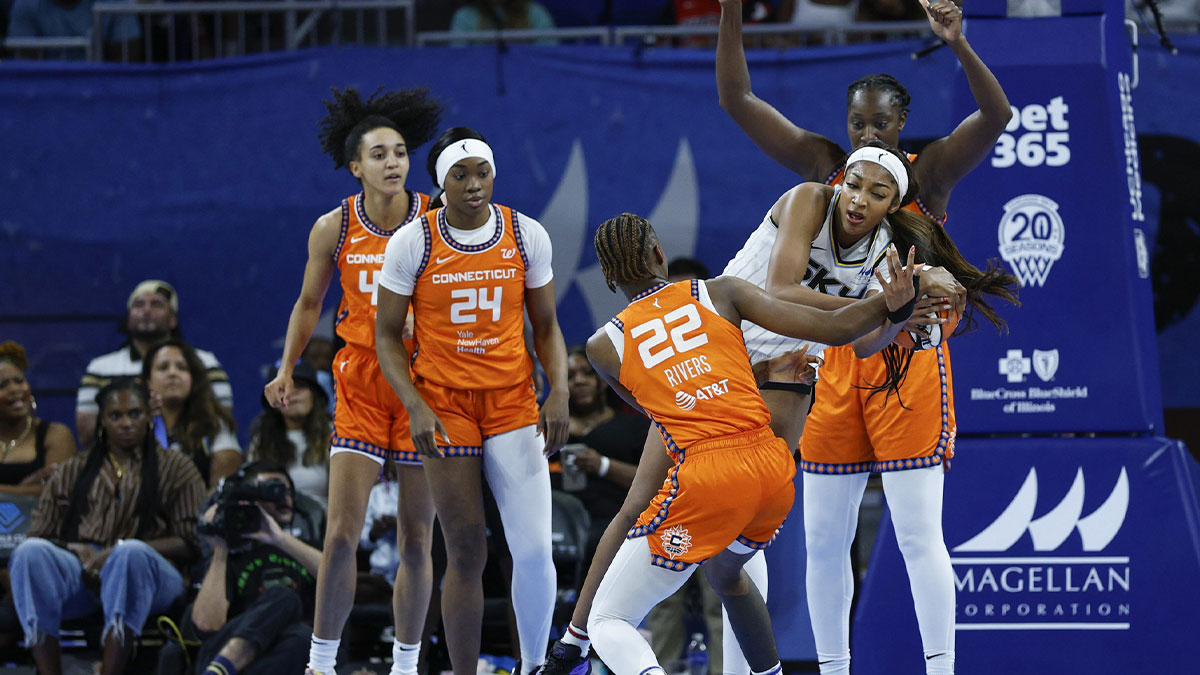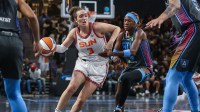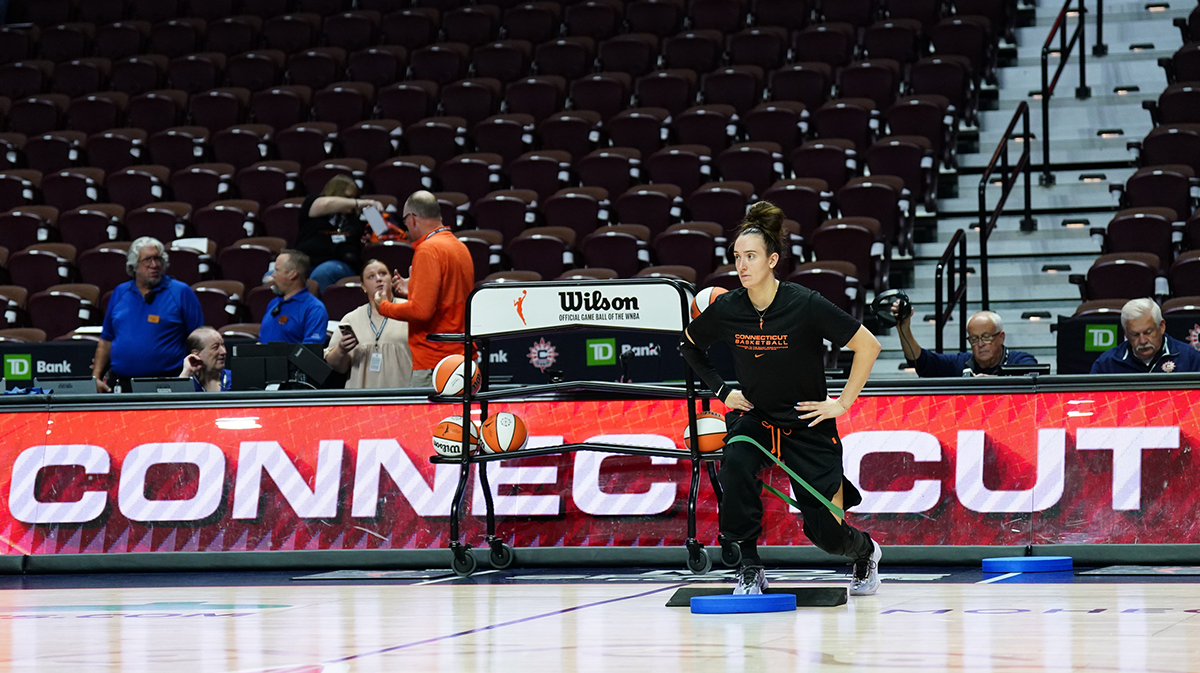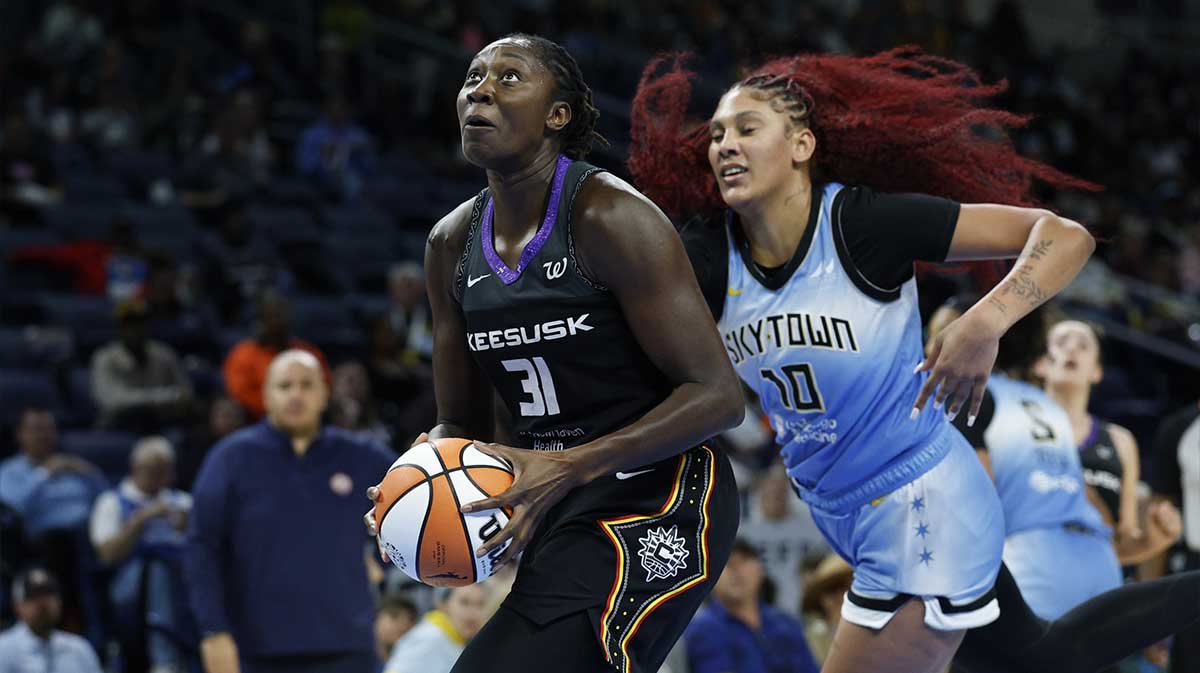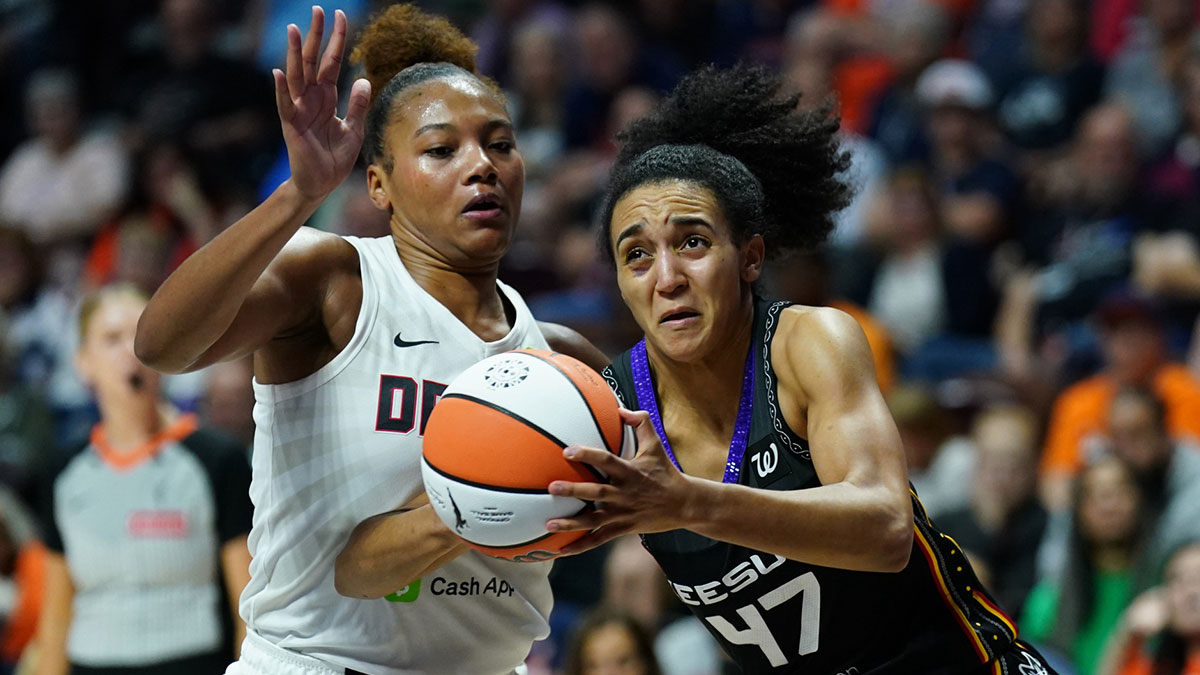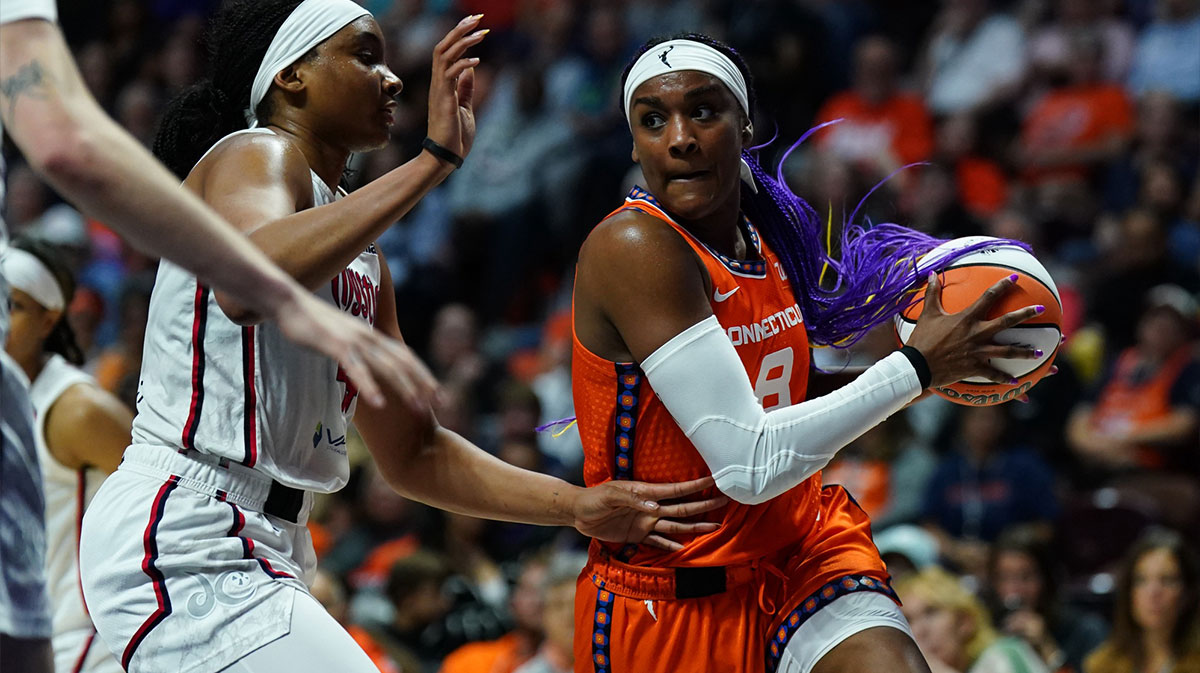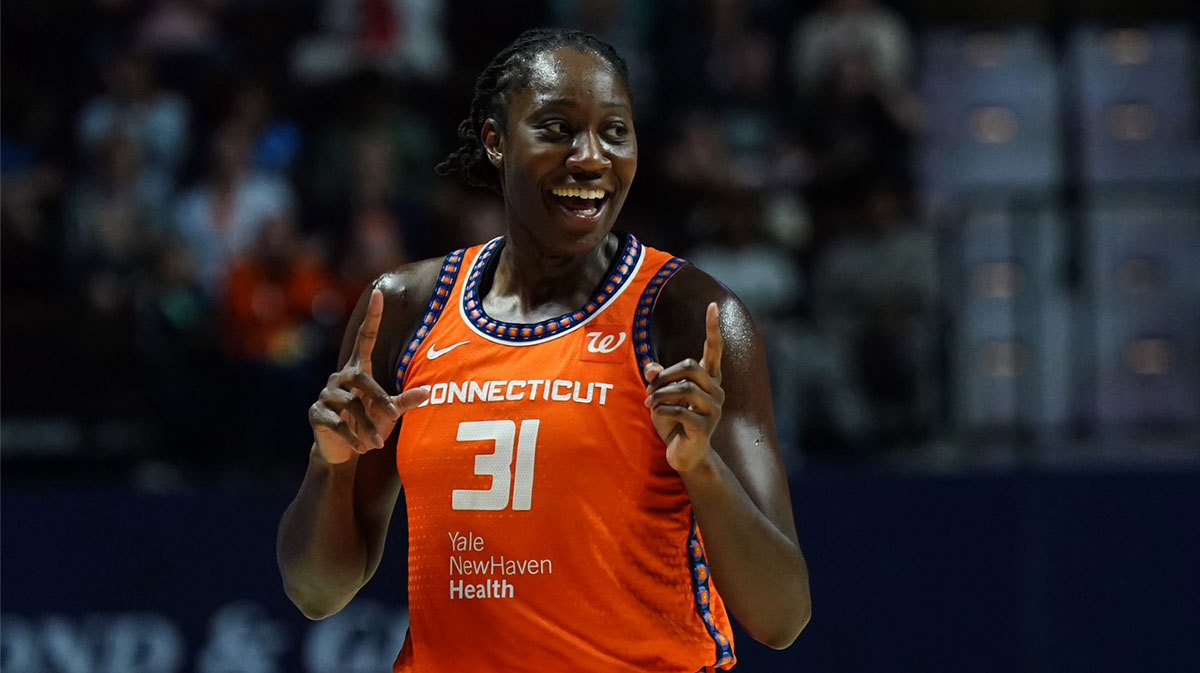The Connecticut Sun made a single move at the 2025 WNBA trade deadline, acquiring forward Aaliyah Edwards from the Washington Mystics in exchange for guard Jacy Sheldon and rights to a 2026 first‑round pick swap. The franchise now finds itself at a pivotal turning point, deep in a full-fledged rebuild after losing its entire starting five, head coach, and veteran leadership in the 2024 offseason.
But even as the regular season winds down, the Sun have still not established any solid on‑court roles or off-court clarity. To make the most out of the closing weeks of the 2025 WNBA season and head into 2026 with a fighting chance at being competitive, the franchise must now make several key internal and external moves. Let's take a look at which ones the Sun should prioritize.
1. Evaluate a potential release to create flexibility
The Sun’s rotation remains crowded, especially upfront, and many midseason signings or training-camp additions have not contributed consistently. For example, several training camp signees like Kariata Diaby, Amy Okonkwo, Madison Hayes, Bria Hartley, and Jaelyn Brown have either seen limited action or have already been waived altogether. Even the once‑high‑profile Diamond DeShields was surprisingly waived before the season even began.
While those decisions have been made, the frontcourt group still remains cluttered, with Haley Peters, Aneesah Morrow, Rayah Marshall, and now Edwards joining the more established Tina Charles and Olivia Nelson‑Ododa. To create some clarity and open a roster spot for a high‑upside two‑way or developmental signing, the Sun should consider releasing a player with minimal impact, possibly Peters, who has seen limited minutes.
2. Move Aneesah Morrow into the starting lineup
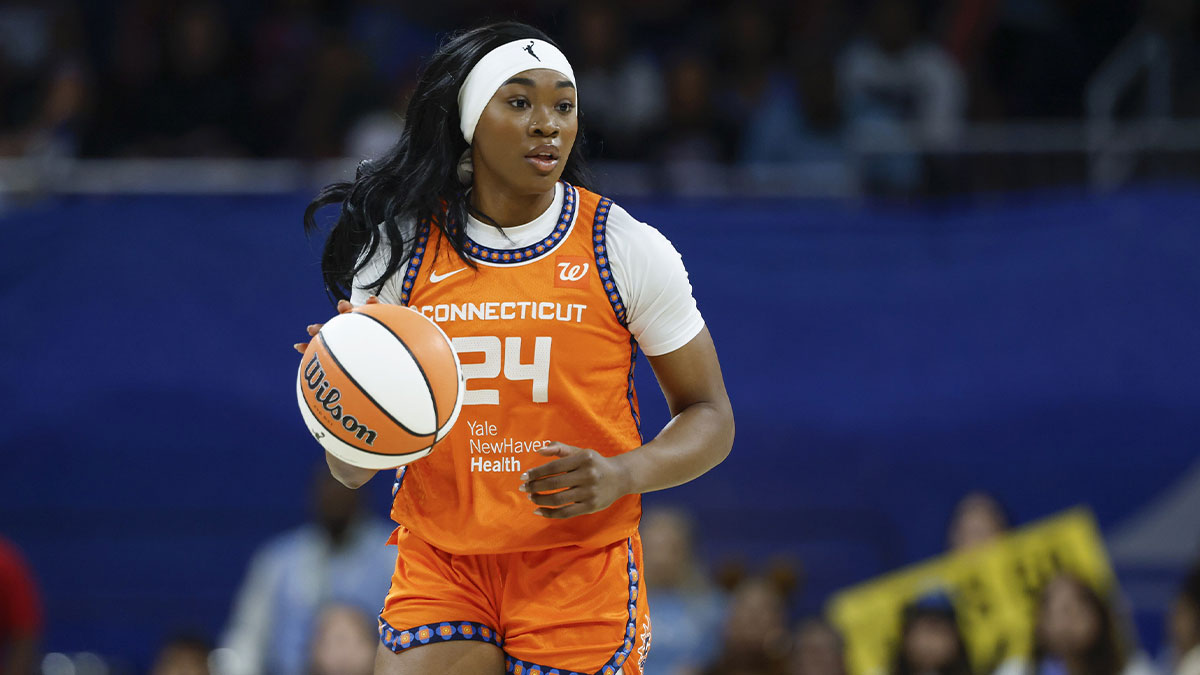
The Sun’s 2025 seventh overall draft pick Aneesah Morrow has had a promising rookie season since entering the campaign after recovering from injury. However, she remains off the starting five. If her energy, athleticism, and defensive tenacity are trending up, head coach Rachid Meziane should consider elevating her to a starting role at forward, partnering her with a reliable scoring veteran.
The shift would lighten the burden on starting players like Mabrey, who has been the focal point of rebuilding narratives since her rejected trade request, and inject sustained energy into first-unit lineups. At the same time, the Sun could try a lineup where Mabrey comes off the bench consistently as a high‑impact sixth woman, which is an adjustment that could morph her into the sparkplug identity that the front office has hoped she'd become.
3. Get the ball into Aaliyah Edwards' hands
New addition Edwards provides energy and positional flexibility since arriving in Connecticut. In her debut on August 11, Edwards finished with a plus-minus rating of +6 despite the Sun's loss. Meziane should aim to integrate Edwards into small‑ball lineups, especially those that stagger Morrow and Charles, to utilize her mobility and defensive intensity to their highest potential.
A rotation where Edwards flanks Morrow or Nelson‑Ododa could spark hustle plays, transitions, and perimeter rebounding, complementing the players around her with style. Given her youth and high level of potential, the Sun should not just treat Edwards as a late-season add-on — move her into meaningful crunch minutes to assess her readiness for next season and beyond.
4. Explore one additional experienced sharpshooter or wing
While the WNBA trade deadline has passed, the Sun still have plenty of assets to tap into. Identifying a wing‑range shooter or another perimeter specialist could boost spacing for the drive-centric Hartley or mid-range Mabrey. Brittney Sykes — who could've been a perfect fit — might already be traded to the Seattle Storm, but the Sun should scan for similar profiles among waived players: Veterans who can stretch the floor, hit catch‑and‑shoot threes, and provide instant rotation relief.
5. Clarify the Marina Mabrey situation once and for all
Mabrey was denied her trade request this past offseason, which left her relationship with the front office tense at best, but she is being portrayed as a foundational offensive piece for the Sun going forward. And although she's fallen into the veteran leadership role very well alongside Tina Charles, avoiding an awkward locker room dynamic in the future will require transparency.
After trade rumors were flying around before the deadline, the Sun either need to recommit to her as a starter and build offense through her, truly making her the “catalyst,” or reluctantly let her go and move on to another rebuilding plan. If Mabrey's struggling with the burden or is mismatched with the plans they have, the Sun heavily risk losing her for nothing. The team should publicly support her and clarify her role, no matter the final decision.
6. Begin offseason work early
This is not a move for the remainder of this season, but general manager Morgan Tuck and the front office should already be laying groundwork for 2026 by scouting the many free agents entering the market, exploring offseason trades, and leveraging their multiple first‑round picks in 2025 and 2026. This proactive post‑deadline position signals commitment to future competitiveness and helps retain the current roster. Moreover, with relocation rumors swirling despite the franchise having committed to playing 2026 at Mohegan Sun Arena, Connecticut taking visible steps to bolster its direction will reassure both players and fans alike.
In the wake of the 2025 WNBA trade deadline, Connecticut stands at a crossroads. With only the acquisition of Edwards from Washington in exchange for Sheldon and future pick‑swap rights, plus a full offseason overhaul — including losing veterans like Alyssa Thomas, DiJonai Carrington, and Tyasha Harris — the team must now shift focus toward optimizing the rotation, salvaging cohesion, and putting a roadmap in place for 2026. The slow, patient style of first-year coach Meziane, under the weight of mass turnover and looming franchise uncertainty, must now pivot toward a swift and strategic refinement.
At a minimum, the Sun must clear a roster spot for some added flexibility, as the deep frontcourt makes it essential to release a player with minimal impact. Doing so will give the team flexibility to add the missing link: A defensive-minded guard or wing who can shore up perimeter weaknesses and cover for injuries.
On court, the young rookie Morrow deserves a greater role alongside Saniya Rivers, who has gotten regular starting roles over the course of the campaign. Morrow's energy and rebounding can transform the second unit or even stabilize the starting five, taking pressure off Mabrey, who has been cast by management as the offensive anchor, and other starters. Instilling that role flexibility in the rebuilding team's DNA now could increase lineup effectiveness and preserve Mabrey’s confidence in remaining a member of the Sun.
Coach Meziane’s philosophy stresses development and player freedom, but with the playoffs out of reach, sharper in-game skills are needed. Going forward, the Sun must continue scanning the waiver wire for a shooter or wing who can potentially stick with the franchise long-term. But what's equally, if not more, important is the clarification of the front office's intentions with Mabrey. Either commit to building around her or let her go, but a definitive answer is essential for locker-room harmony.
Finally, using their abundance of 2026 first-round draft capital to begin offseason planning now will signal the Sun's seriousness and help stabilize the franchise, especially amid relocation speculation.
With these strategic moves, among others, the Sun can extract late-season lessons, create cohesion, and build confidence to enter 2026 with momentum — even while enduring a rocky 2025. The Sun are not seeking wins now but are instead laying the foundation for an identity-first, development-focused resurgence.

